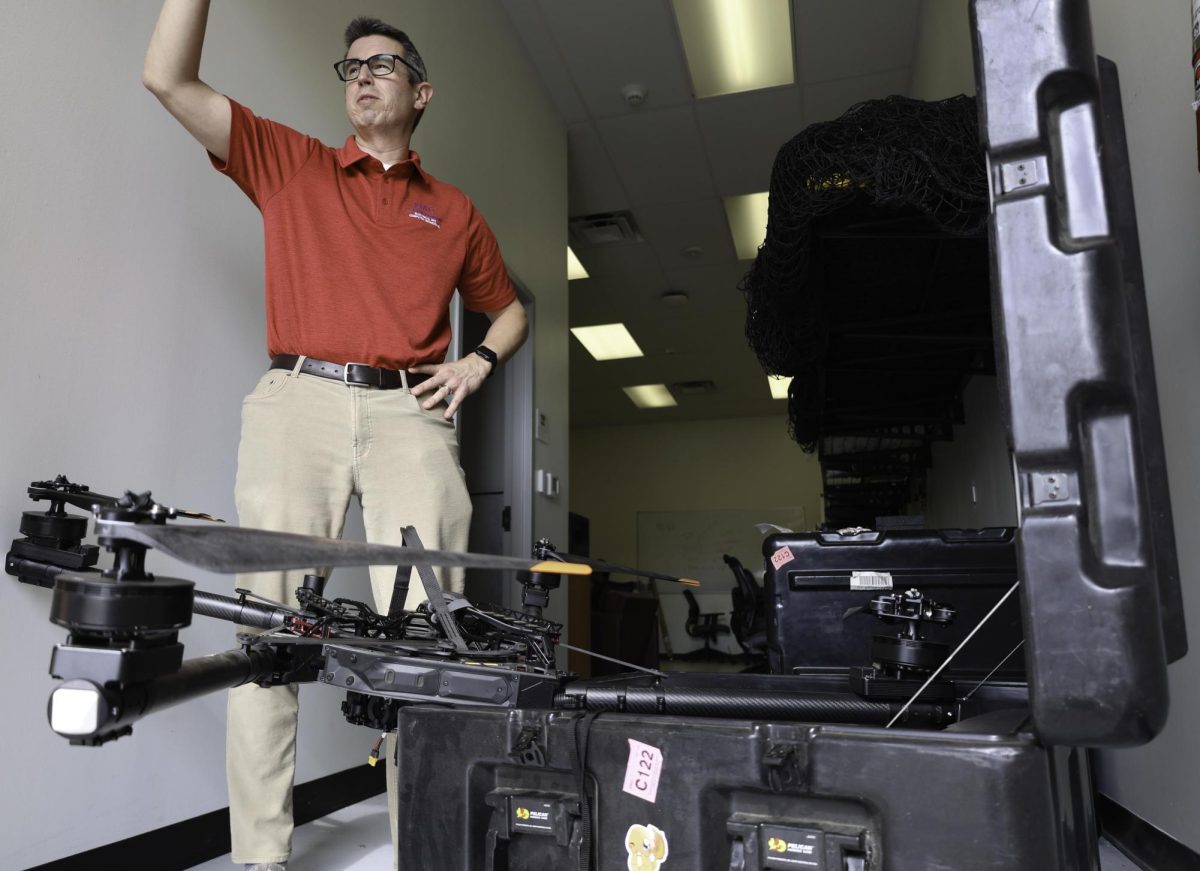Some people might describe Dr. William Jordan’s life as elegant. Refinement surrounds him from all angles, in his Dallas home, career and lifestyle.
One of his current passions is the current exhibit of “Juan van der Hamen y Leon and the Court of Madrid” at the Meadows Museum. He is considered by many art historians and scholars to be the leading authority on Van der Hamen and Spanish art in general.
“The exhibition is important to me because I wrote my doctoral dissertation on him,” Jordan said.
Jordan is the founding director of the Meadows Museum, was the chair of the art history department at SMU and is currently an art consultant around the world.
Salvador Salort, the senior curator for the Meadows Museum, worked closely with Jordan on the new exhibit. He is not only Jordan’s colleague but an admirer as well.
“It was a great honor working with Jordan and learning from him,” Salort said.
He taught Salort how to look at Spanish art in a different way and shared his theories about various paintings.
The seventh floor of a high rise building in West Village is home for Jordan and his personal collection of art. The door swings open to reveal a spacious and sophisticated apartment.
The tan hardwood floors lead to various rooms filled with sculptures and paintings. Jordan, dressed in black slacks and a charcoal grey shirt, sits in the living room surrounded by shelves of books. On the coffee table is his book, “Juan Van Der Hamen & The Court of Madrid.”
Though born outside of Nashville, Tenn., Jordan grew up in San Antonio, where his interest in Spanish art first began.
“There is a lot of Spanish influence in Texas and I grew up with it,” he said.
Jordan studied Spanish throughout his childhood and broadened his study to art history at Washington and Lee University. He said he became the “pet” of his art teacher and the department.
Jordan narrowed his study to Spanish art in graduate school at New York University.
Little did Jordan know how much his life was going to change when one of his professors at NYU was contacted by SMU. Algur Meadows was looking for assistance to revamp the then-failing Meadows Museum.
The museum’s doors opened in 1965, and Meadows unknowingly displayed forged art. When he discovered that his collection was comprised of fakes, the press attacked the museum, and he sought professional help to refurbish his collection.
At the age of 27, joining the museum was an enormous step in Jordan’s career.
“It was exciting and very scary to start so young,” he said.
Jordan now considers his meeting with Meadows to be one of the defining moments in his life. Together, they made a pact for the Meadows Museum, and Jordan made it his goal to make a great museum.
The Meadows Museum today has the best collection of Spanish art outside of Spain, due in large part to Jordan’s assistance. The museum now displays works of Velázquez, Picasso, El Greco and de Goya.
Jordan said he did not meet his goals during his time at SMU. To make a great museum would take much more than he could do, he said, but he was still able to start a great collection. He traveled with Meadows and was able to help him acquire some pieces.
Sophomore art history major Meg Noble has never met Jordan but is a product of his efforts and knowledge.
“The museum, or the department, wouldn’t be where they are today without Dr. Jordan’s help,” she said.
When Jordan resigned from SMU in 1981, his passion for Spanish took him to the Kimbell Museum in Fort Worth, where he worked as the deputy director. It was there that he met Ted Pillsbury, a close colleague and friend who worked as director for the Meadows Museum after Jordan.
Pillsbury said Jordan has a great eye, and his vision and imagination were indispensable to the development of the Kimbell.
“Bill Jordan is a renaissance man. A great curator, author and citizen,” Pillsbury said.
Pillsbury said they enjoyed each other’s company and that he especially enjoyed the process it took to acquire different paintings.
One painting they wanted turned up in a New York gallery. However, the gallery would not sell it to the Kimbell because of a misunderstanding involving Pillsbury. Pillsbury said they were able to win over the gallery with charm and flattery, mostly from Jordan.
While Jordan still worked at the Kimbell, he took a sabbatical and spent a year in Spain. It was during this time he realized he did not want to work anymore, and upon his return he gave his year’s notice.
Though currently an art consultant, Jordan is now looking for some vacation time.
“I’m getting tired of just about everything,” he said with a small laugh.
The historian is not looking for a retreat to the beach. He plans on traveling around America looking for places significant in his family history.
The exhibit will be on display now through May 28.








